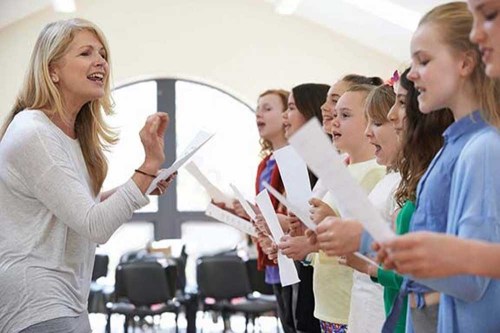Why the arts matter in education
Published 12:00 am Monday, April 1, 2024

- 472791114
One of the great joys of parenting for me was to watch my children flourish when they were given access to the arts.
In our home, the arts included painting, ceramics, drawing, music, theater, singing and ballet. All these things taught my children important life skills and helped their emotional well-being.
Encouraging creativity allows children to make decisions, to consider options and different ways of doing something. You can see their minds at work, creating, designing and putting their feelings into their art. When children draw, they often draw scenes of family, pets or even situations they have experienced. From an early age, children use art to discover their world, work out problems and express emotions.
Educators are have become more vocal about the vital role that the arts play in education and the many other positive aspects of integrating what comes naturally to the learning experience. Many of us never questioned the value of art but when budgets are considered, the arts are frequently dismissed as non-essential. That way of thinking is changing, demonstrated by the revision of STEM into STEAM.
The idea of STEM was to focus on the study of science, technology, engineering and mathematics. But pondering the many activities within STEM, you realize that none would be possible without art. Adding the arts engages both sides of the brain, encourages using creativity to problem-solve and encourages self-empowerment to handle situations that arise.
There are many benefits to art in education. Here is a sampling of the positive benefits that come with allowing children to be the naturally innovative humans they are.
Creativity — Any form of art will stimulate the creative part of the mind. It is not just about creating something; creativity is also responsible for problem-solving (as in thinking outside the box) and understanding concepts. Creative minds are able to look at something from alternate angles, evaluate the issue and form a solution.
Improved mental health — This topic hits in a number of ways; keeping your mind focused on art can help with stress, anxiety and depression. It can help children work through conflicts and find answers. Are you someone who turns up the music when you just need to escape? Do you enjoy paint nights and find yourself feeling calmer afterwards? Having an outlet can be therapeutic and it can also boost self-esteem.
Critical thinking — Students who are involved in art learn to analyze, explore, build an appreciation for diversity, learn to interpret and develop problem-solving skills. Critical thinking skills allow you to step back and view an issue from multiple perspectives. It also encompasses fairness, objectivity, evaluation, research, analysis and flexibility.
Critical thinkers become good listeners and learn the ability to explain.
Improved academic performance — Students who are involved in performing arts typically have better grades, especially in subjects such as math. Being exposed to music is also shown to increase cognitive development and increased reading proficiency.
At school, teachers have started to incorporate social-emotional learning and educators are making the connections with art as well. It can influence things like empathy, the ability to listen to new or differing perspectives and enhance communication. Often students become more interested in learning about other cultures.
Teamwork — Performing arts is a great example, as it teaches about working as a group and how multiple groups can work towards the same goal. With a school musical, some may act, others sew costumes, some will play the music or create the backdrop and props, and still others will operate the technical aspects of lights and sound. When all these groups come together, they create a show. In addition to teamwork, they learn how to focus, time management skills and collaboration.
There are so many benefits to exposing children to art – even toddlers can improve their motor skills and language. As humans we are designed to create, we are writers, musicians, painters and so much more.
Keeping arts as a cornerstone of education means that we are fostering the thing that makes us uniquely human, allowing for creative expression. For every convenience in our current world someone had to dream it up, design it and creatively find a way for it to operate. Art is the foundation that allows children to develop critical skills, not only for education but for later life.





